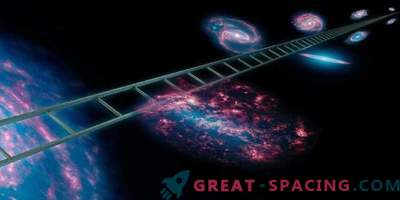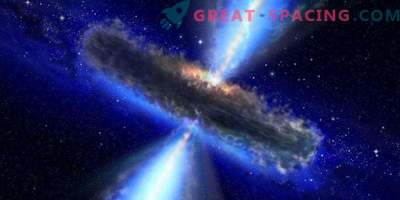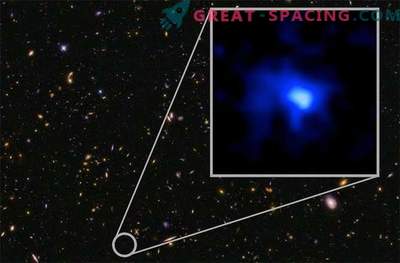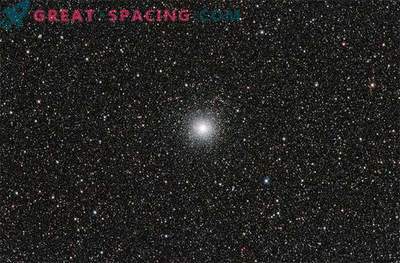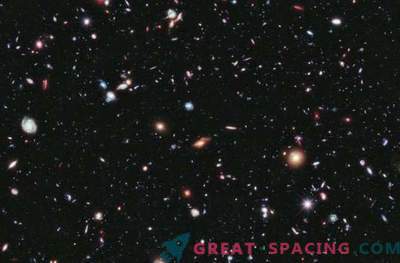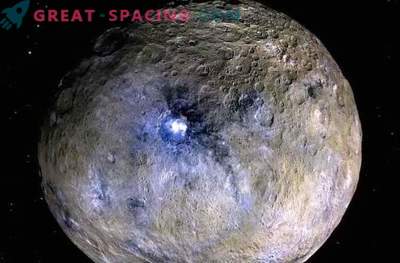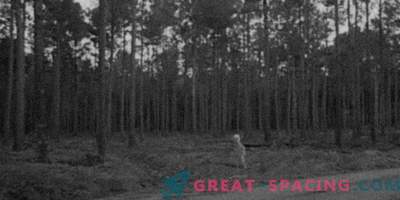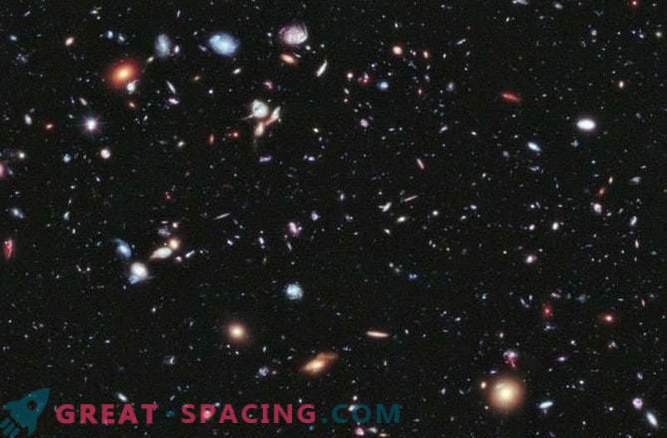
Although it is very, very, very large, but the universe probably cannot be infinitely large. But this does not mean that it has an edge.
We all know that the universe is expanding, isn't it? Well, if you did not know, then do not thank for the information. We live in an expanding universe: every galaxy flies away from any other galaxy. This naturally leads to the general question: “If the Universe expands, then in what does it expand? In a big universe? In nothing? In something like an indefinite fog? Where is the edge of our cosmic bubble?
Well, our Universe has an edge - that is, if by “our Universe” we mean the observed Universe. The speed of light is only speed - and the Universe exists for a long time (about 13.77 billion years). But for us, this means only so much of the Universe was revealed to us through light, which traveled through vast cosmic distances. And what is beyond our observed limit? It's easy: just more things like galaxies and black holes and new, fantastic varieties of cheese. These things are unattainable for us, but they are still there.
From our point of view, it seems that we are in the center of everything, and each galaxy flies away from us. So this naturally leads to the line of reasoning: “There must be an edge.” But, let's say, you jumped to Andromeda, our closest neighbor in the Galaxy. From this new point of view, everything still looks like you are in the center of the universe, and everything flies away from you. Now let's really go crazy and pretend that we can teleport you to the most distant observed galaxy, at the far edge of our observational reach. Guess what? Yes, from your position it looks like you are in the center of the Universe, and each galaxy (including the far Milky Way) rushing away from you. This is what we mean when we say, “The universe is expanding.” Each galaxy is removed from any other galaxy (with some minor exceptions from local mergers, but this is a topic for another article).
But there should be a limit, right? The universe cannot be infinite, right? Right?
Well, probably not. Although this is a very, very, very large universe, but probably it is not infinitely large.
But she still does not need edges.
Think again about jumping from galaxy to galaxy. From the side of the Milky Way, the Universe looks like a huge soap bubble increasing in size from our center. But from another galaxy this universal bubble looks different, because this other galaxy is in the “center” of the bubble ... And the temptation to call such concepts as words like “inside” or “edge” in our Universe does not make sense from the point of view of a new perspective . And this is true for every galaxy.
I will say it again: the “expanding universe” simply means that each galaxy is moving further away from any other galaxy. Here it is! There is no edge. No bubble. Nothing to expand. The math is simple: the universe gets bigger with time. That's all.
Let's take a step back. Everyone knows these common analogies used to describe the expanding universe: galaxies are like ants crawling around a beach ball. We are all just raisins in a loaf of bread. And - oh! The ball is inflated! Yes! A loaf of bread grows in the oven! The space expands, and galaxies are carried along with it! See you Easy!
These analogies, of course, give us an important point: galaxies do not fly and do not waltz at a distance from each other. This is the space below them, which does all the work of expansion; galaxies only lie on the cosmic carpet. But these analogies also carry a fatal flaw. We can all easily imagine inflating a beach ball or a rising loaf of bread, and we immediately think of them as expanding into something: empty air. The beach ball has skin. The loaf has a delicious, crisp. They have edges, and they move into something.
Our mind made fun of us, and this deceives us and hides what actually happens.
When we use the analogy of ants-on-the-beach-ball, the first thing people say: “Why ants?”. I dont know; just hang out with it. And the second thing that people say: "Oh, the center of the universe is right there, in the middle of the ball." At this moment I have to jump with restrictions by analogy: our whole Universe is the surface of an inflatable ball. And the surface of the ball has no center. Just as the surface of the earth has no center. We could make the poles wherever we wanted.
In the ball-beach model, our entire Universe is a two-dimensional surface full of idiotic ants trying to crawl towards each other, but they cannot, because some continue to inflate it with a jerk. Okay, fine, whatever. This model of the Universe is two-dimensional, but in the eyes of our mind we immediately think of its expansion into the third dimension - a dimension where ants cannot access because they cannot jump. But this extra dimension provides “space” so that the ball expands into something.
But our real Universe is three-dimensional. While string theory suggests that there may be additional dimensions, they are all subminiature, so they are not taken into account. So is there a fourth additional dimension that provides “material” for expanding our Universe into something? Maybe yes, maybe not. Here's what: math can create a fourth dimension for our 3D expansion of the universe into something. And we would certainly have an “edge” in this additional dimension, so you can also point to the “edge” of the 2D-beach surface of the ball.
But this is optional.
We do not need a fourth dimension to cover our Universe. We have a complete and consistent mathematical description of the expansion of the Universe, using only the normal, everyday three dimensions that we know and love. Thus, this means that we can have an expanding Universe without needing an edge or something so that it expands into something.
I admit that I have problems explaining this concept. But this is the beauty of using mathematics to understand the Universe: we can create and manipulate concepts, because our brain simply cannot cope on its own!
